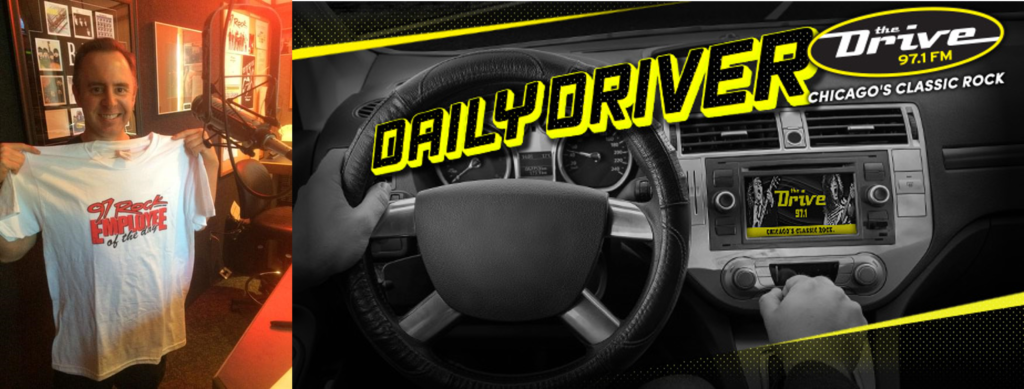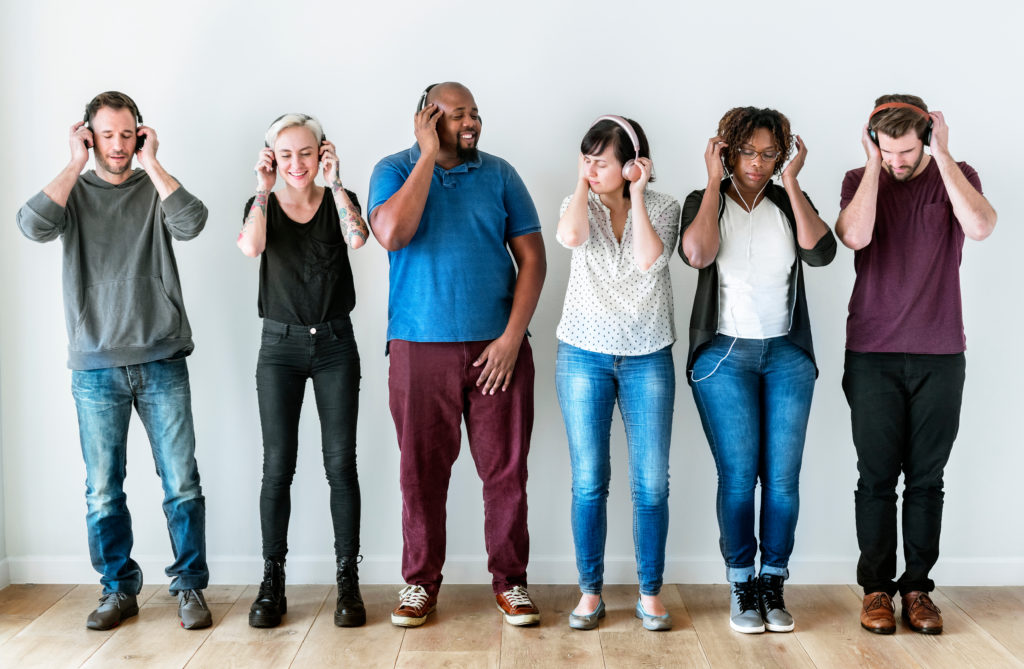
In pretty much every industry, it’s about product benefit. What is it we do that makes us unique, valuable, compelling entertaining?
In radio, our career success has often revolved our ability to make our brand stand out and to get noticed. In even medium and smaller markets, the number of competitors up and down the radio dial is often formidable. What is it about your station that’s deserving of the audience’s time and attention?
And for programmers and radio marketers who see the broader landscape, these questions apply to all media – digital, audio, streaming platforms, podcasts. Seemingly, everyone’s producing content. What’s so special about yours?
That’s the question they’ve been asking at the New York Times, a multi-media company that operates at the highest of level. Just about everything the Times pursues turns into a quality product. But like all content creators, the question revolves around how to generate brand attention?
According to Marketing Brew’s Katie Hicks, “the old gray lady” is not focusing on its journalists or newsmakers. They’ve turned the spotlight on their readers. In a series of cerebral ads (I read the Times, but I’m not sure I “get” the complex messaging), the ads encompass a reader’s tastes and sensibilities. It is also an example of storytelling, a key component of this strategy to put fans first.
Marketing Brew highlights a campaign ad focused around Jordan, and climbs in his head. The ad combines Times’ headlines into a montage that “tells the story of the individual reader – weaving together their interests, reading history, and personal story to illustrate their independence.”

The article quotes Amy Weisenbach, the Times SVP and head of marketing:
“This campaign is about celebrating the role independent journalism plays in our subscribers’ lives, helping them discover new interests, and become who they want to be.”
 Perhaps in a more down to earth way, some radio stations have also consistently celebrated individual listeners, focusing on their musical taste. WGRF in Buffalo has long showcased “The 97Rock Employee of the Day,” while in Chicago, WDRV has regularly heralded the “Daily Driver.”
Perhaps in a more down to earth way, some radio stations have also consistently celebrated individual listeners, focusing on their musical taste. WGRF in Buffalo has long showcased “The 97Rock Employee of the Day,” while in Chicago, WDRV has regularly heralded the “Daily Driver.”
Each of these campaigns gives an individual listener a chance to play their favorite Classic Rock songs – an expression of their musical taste. These are just a few of the examples of the spotlight turning on the audience, a trend turbocharged by American Idol exactly 20 years ago when a young cocktail waitress from Texas, Kelly Clarkson, was crowned the franchise’s first champion.
Letting the common man – or woman – be the star isn’t a new trend, but it’s a tried and true method of staying connected with the audience.
We’re seeing SiriusXM go this route, too. On the Tom Petty Channel, anyone can become “The Last DJ,” playing and telling personal stories behind their five favorite Petty songs. It’s a great feature that connects fans with a beloved artist, and another example of putting the audience first.
feature that connects fans with a beloved artist, and another example of putting the audience first.
All of a sudden, it’s all about the listener. But not just because it’s a cool thing to do. It can have an important strategic purpose.
Back in the ’90s, I was consulting XL102 in Richmond, a strong, highly rated Classic Rock station. Unfortunately, the sales department was being hampered by its heavy metal roots. In the collective mind of clients, buyers, and agencies, XL was a “black T-shirt station” – not a desirable image for any station in a genteel market like Richmond.
 The station’s GM, Claire Shaffner, wouldn’t stand for it, convinced she could turn the station’s fortunes if she could transform XL102’s image. Working with her own local agency (also a savvy move), she developed a series of print ads targeted to upscale readers who flocked to the market’s yuppie signature magazine.
The station’s GM, Claire Shaffner, wouldn’t stand for it, convinced she could turn the station’s fortunes if she could transform XL102’s image. Working with her own local agency (also a savvy move), she developed a series of print ads targeted to upscale readers who flocked to the market’s yuppie signature magazine.
“I’m a Richmond Rocker” showcased successful young professionals in the market who showed off their homes, cars, jobs, and clothes in a “Dewar’s Profile” creative style. Of course, they also named their favorite band and XL102 DJ. And in the process, the creative was disarming, and had the effect of repositioning the station’s audience as contributing members of society.
The campaign wasn’t just a one-off. Claire ran these slick, well-produced local stories for years, month in and month out, determined not to just to reimage the station, but to make its new perception stick.
And here we are, three decades later, and the broadcast radio industry has an image challenge of its own. While there is no data on radio’s evolving image, naysayers out there insist “No one listens to radio anymore,” choosing instead satellite radio, Spotify, podcasts, and other options.
image, naysayers out there insist “No one listens to radio anymore,” choosing instead satellite radio, Spotify, podcasts, and other options.
Like the way in which XL102’s audience was demonized by cynical media buyers, broadcast radio could use its own perceptual makeover. Showing off the industry’s large, diverse, and enthusiastic audience isn’t a fantasy – it’s something I’ve seen every week, especially since the onset of the pandemic.
I have conducted more than 100 focus groups and one-on-one interviews since the first month of COVID, providing a unique perspective of the audience at perhaps the most critical, most disruptive pain point of their lives.
While many have discovered new gadgetry and have subscribed to umpteen streaming content services, many of them have also reconnected with a favorite radio station and its personalities during their “worst of times.” Stations that went into the pandemic from a position of growth may have actually gotten stronger during these past 24 months of gloom and doom.
their “worst of times.” Stations that went into the pandemic from a position of growth may have actually gotten stronger during these past 24 months of gloom and doom.
Many listeners have a heightened sense of appreciation for a local radio station and its airstaff for providing comfort, empathy, and of course, entertainment – without them spending a dime. In an increasingly inflationary environment, the best media deal in town continues to be local radio.
But once again, that’s a story in search of a storyteller. Claire Shaffner (pictured) stepped away from radio in the ’90s to pursue a successful career in real estate in the Richmond community. She passed away last year, but never lost her passion for radio.
 If she was consulting us today, her charge would be for the industry to get off its collective rear end, craft a compelling campaign, and then run the crap out of it – all in her sweet Southern flavored way.
If she was consulting us today, her charge would be for the industry to get off its collective rear end, craft a compelling campaign, and then run the crap out of it – all in her sweet Southern flavored way.
You knew when Claire thought you were slacking. And right now, the radio broadcasting industry is mailing it in, often playing a media sleight of hand game designed to move a buyer’s focus away from broadcast and to the so-called greener pastures of digital audience networks. Advertisers don’t want to buy digital listeners – they want audiences across the spectrum who consume content on a variety of sources and who will buy their product.
Radio broadcasters now offer the best of all worlds – an amalgam of consumers who listen when and where its convenient – on a variety of sources that range from car radios to smart speakers to mobile phones. More and more stations and shows are offering on-demand access, video versions of big shows, and of course, podcasts that take audiences “backstage.”
range from car radios to smart speakers to mobile phones. More and more stations and shows are offering on-demand access, video versions of big shows, and of course, podcasts that take audiences “backstage.”
By turning the focus back on the end user – the listener, the fan – radio broadcasters can capitalize on the biggest trend in marketing, while strategically addressing a problem that impacts all aspects of the operation, from sales marketing to recruitment and retention.
Are you listening, radio?
- Media And Technology In 2025: Believe It Or Not! - April 18, 2025
- In Radio, You Just Never Know - April 17, 2025
- The Secret To Making A Great Podcast (And Great Radio) - April 16, 2025




AMEN!!!!
C’mon, Don. Don’t get all religious on me now. 🙂
In my senior year of high school, our radio drama teacher brought a woman from an ad agency in to talk to us. Her words may have given me the most insight I have ever learned. “In radio, what is for sale is the audience!”
Correctamundo, Bob. We “rent” it out to advertisers and marketers by the second and minute. And it’s another reason why we should be “selling” the total audience broadcast + digital. Thanks for the high school lesson.
I think this article just points out the obvious….It’s always been about the listener, the audience. James Earl Jones said it best in the movie Field of Dreams… “if you build it, they will come” !!!
Appreciate the comment, Ralph.
the audience is there to participate in the programs they listen to, the radio stations have not been able to capitalize on it even with all the tools that are currently available.
If it’s not done now they will lose all their listeners.